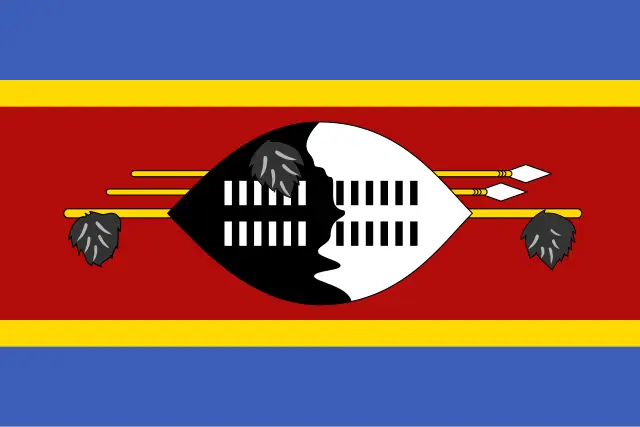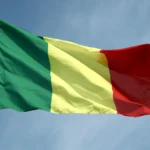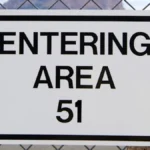
Welcome to a journey through the fascinating country of Eswatini, where tradition meets modernity in a land rich with cultural heritage and natural beauty. Explore the unique facts and numerical trivia that define this small but vibrant nation in southern Africa. From its ancient mines to colorful traditions, join us as we uncover the diverse tapestry of Eswatini’s history, people, and landscapes. Let’s delve into the intriguing details that make Eswatini a truly remarkable destination.
Eswatini, formerly known as Swaziland, is a unique country in Africa as one of the last remaining absolute monarchies in the world. King Mswati III holds significant power and influence over the nation’s affairs, making decisions that impact the lives of its citizens directly. The monarchy plays a central role in Eswatini’s culture and governance, with traditions and customs deeply rooted in the monarchy’s history.
On September 6, 1968, Eswatini gained independence from British colonial rule, marking a pivotal moment in the country’s history. This date is celebrated annually as Independence Day, commemorating the nation’s sovereignty and self-governance. The independence movement in Eswatini was a significant milestone in the country’s journey towards autonomy and self-determination.
With a land area of approximately 17,364 square kilometers, Eswatini is among the smallest countries in Africa. Despite its size, the country boasts diverse landscapes, including mountains, savannas, and wildlife reserves. The compact size of Eswatini contributes to its close-knit communities and interconnected society.
Home to around 1.2 million people, Eswatini has a relatively small population compared to other African nations. The size of the population influences various aspects of life in the country, from social dynamics to economic opportunities. The people of Eswatini contribute to the rich cultural tapestry that defines the nation.
The traditional Reed Dance ceremony in Eswatini is a vibrant cultural event where unmarried women come together to dance and pay homage to the king. This ceremony, also known as Umhlanga, showcases the country’s cultural heritage and traditions. The Reed Dance is a symbol of unity and pride for the Swazi people, highlighting the importance of tradition in Eswatini.
Eswatini is home to the Lion Cavern, the oldest mine in the world dating back 43,000 years. This archaeological site provides insights into early human activities and mining practices. The Lion Cavern represents a significant historical landmark in Eswatini, shedding light on the country’s ancient past and the ingenuity of its early inhabitants.
Being a landlocked country, Eswatini is bordered by South Africa to the west and Mozambique to the east. The geographical location of Eswatini influences its trade relationships, transportation networks, and cultural exchanges with neighboring countries. Despite its landlocked status, Eswatini remains connected to the region through various means of communication and commerce.
The lilangeni is the official currency of Eswatini, pegged to the South African rand. This currency arrangement provides stability and predictability in economic transactions within the country. The exchange rate between the lilangeni and the rand plays a crucial role in Eswatini’s financial system and international trade activities.
Eswatini faces a significant challenge with a high HIV prevalence rate, affecting approximately 27% of adults aged 15-49. The impact of HIV/AIDS on the population’s health and well-being is substantial, requiring ongoing efforts in prevention, treatment, and support services. Addressing the HIV epidemic is a priority for public health initiatives in Eswatini.
Emlembe, standing at 1,862 meters above sea level, is the highest point in Eswatini. This mountain peak offers stunning views of the surrounding landscapes and serves as a natural landmark in the country. The elevation of Emlembe contributes to the diverse topography of Eswatini, attracting visitors and nature enthusiasts to explore its scenic beauty.
Eswatini is renowned for its unique traditional architecture, characterized by beehive-shaped huts. These structures, made from natural materials like thatch and mud, reflect the country’s cultural heritage and craftsmanship. The design of the beehive huts is both functional and symbolic, embodying the connection between the Swazi people and their environment.
The oldest mine in the world, Lion Cavern, located in Eswatini, dates back 43,000 years. This archaeological site holds significant historical value, providing insights into early mining practices and human activities in the region. The existence of the Lion Cavern mine showcases the long history of resource extraction in Eswatini.
Eswatini’s membership in the Southern African Development Community (SADC) and the African Union underscores its commitment to regional cooperation and integration. As an active participant in these organizations, Eswatini collaborates with other African nations on various political, economic, and social initiatives. The country’s involvement in regional bodies reflects its desire to contribute to the broader African agenda.
The vibrant cultural heritage of Eswatini is showcased through traditional music and dance forms. These artistic expressions play a central role in Swazi society, serving as a means of storytelling, celebration, and community bonding. Music and dance are integral components of cultural identity in Eswatini, preserving age-old traditions for future generations.
Eswatini has three official languages: Swazi, English, and Zulu. This linguistic diversity reflects the country’s historical influences and multicultural heritage. The use of multiple languages in Eswatini promotes communication and inclusivity among different linguistic communities, fostering unity and understanding.
Agriculture, particularly sugar cane production, plays a vital role in Eswatini’s economy. The cultivation of sugar cane is a significant industry in the country, contributing to export earnings and employment opportunities. The agricultural sector in Eswatini supports livelihoods and sustains rural communities across the nation.
Eswatini faces challenges related to high unemployment rates, with around 40% of the population living below the poverty line. The prevalence of unemployment impacts social welfare, economic stability, and overall quality of life in the country. Addressing the issue of unemployment is a priority for government policies and development strategies in Eswatini.
Eswatini operates under a dual legal system that combines traditional Swazi law with Roman-Dutch law. This legal framework reflects the country’s cultural heritage and colonial history, blending indigenous customs with European legal principles. The coexistence of traditional and modern legal systems in Eswatini shapes the administration of justice and governance in the country.
Handicrafts, including intricate wood carvings and colorful textiles, are prominent in Eswatini’s artisanal traditions. Local artisans showcase their skills and creativity through handmade crafts that reflect Swazi cultural motifs and craftsmanship. The production of handicrafts supports local economies and preserves traditional art forms in Eswatini.
Independence Day in Eswatini is celebrated on September 6th each year, commemorating the country’s liberation from British colonial rule in 1968. This national holiday is marked with festivities, ceremonies, and cultural events that honor the nation’s history and sovereignty. Independence Day holds special significance for the people of Eswatini, symbolizing unity and freedom.
Eswatini is a constitutional monarchy, with King Mswati III serving as the current monarch. The monarchy coexists with a system of governance that includes a constitution and legal framework to guide the country’s administration. King Mswati III plays a ceremonial and symbolic role in Eswatini’s governance, upholding traditions while respecting the rule of law.
With a high literacy rate of around 87% among the population aged 15 and above, Eswatini prioritizes education as a key component of national development. Access to quality education and literacy skills are essential for individual empowerment and socioeconomic progress in the country. The emphasis on education reflects Eswatini’s commitment to human capital development.
Eswatini boasts a rich biodiversity, with diverse plant and animal species inhabiting its varied ecosystems. The country’s natural heritage includes unique flora and fauna that contribute to its ecological richness and environmental significance. Conservation efforts are essential to preserve Eswatini’s biodiversity for future generations.
Eswatini experiences a tropical climate characterized by hot summers and mild winters. The climatic conditions in the country influence agricultural practices, wildlife habitats, and overall environmental sustainability. Adaptation strategies to climate change and weather patterns are crucial for mitigating risks and promoting resilience in Eswatini.
Eswatini is committed to sustainable development goals aimed at improving the quality of life for its citizens while preserving natural resources. The pursuit of sustainable development involves balancing economic growth, social well-being, and environmental protection. Eswatini’s efforts towards sustainability reflect a long-term vision for inclusive and environmentally conscious development.
FAQs about Eswatini: Unveiling the Kingdom of Mountains and Culture
Eswatini, formerly known as Swaziland, is a beautiful and culturally vibrant kingdom nestled in Southern Africa. Here are some frequently asked questions to quench your curiosity about this unique destination:
1. Where is Eswatini and what is its landscape like?
Eswatini is a landlocked country, completely surrounded by South Africa to its north, west, south, and southeast, and Mozambique to its northeast. Despite its small size (roughly the size of New Jersey), Eswatini boasts diverse landscapes.
- The Highveld: This mountainous region in the west offers cool temperatures, rolling hills, and stunning scenery.
- The Middleveld: This mid-altitude zone features fertile valleys and abundant savannah grasslands.
- The Lowveld: This hot and dry region in the east is known for its bushveld and sugarcane plantations.
- Lubombo Mountains: This mountain range runs along the eastern border, offering dramatic views and a cooler climate.
2. What is the capital of Eswatini?
Eswatini has a unique dual capital system:
- Mbabane: The administrative capital, Mbabane is the largest city in Eswatini and the center of government offices and businesses.
- Lobamba: The royal and legislative capital, Lobamba houses the royal palace, Parliament buildings, and the National Museum.
3. What languages are spoken in Eswatini?
Eswatini has two official languages:
- English: Widely used in government, business, and tourism.
- Swati: The native language of the Swazi people, spoken by most of the population.
4. What is the government structure of Eswatini?
Eswatini is an absolute monarchy with a parliamentary system. King Mswati III is the head of state, while the Prime Minister leads the government. A bicameral Parliament exists, but the King holds ultimate power.
5. What is the culture of Eswatini like?
Eswatini is known for its rich and vibrant culture. Swazi traditions play a significant role in everyday life, with ceremonies like the Umhlanga Reed Dance (a colorful celebration of the Queen Mother) attracting international attention.
- Traditional crafts: Basket weaving, pottery, and beadwork are some of the beautiful crafts practiced in Eswatini.
- Music and dance: Swazi music is energetic and rhythmic, often accompanied by traditional dances.
- Belief systems: Christianity is the dominant religion, but many Swazis also hold indigenous beliefs that emphasize respect for nature and ancestors.
6. What are some popular things to do in Eswatini?
Eswatini offers a variety of activities for visitors:
- Cultural experiences: Immerse yourself in Swazi culture by attending a traditional ceremony, visiting a craft market, or staying in a homestead.
- Wildlife viewing: Spot elephants, rhinos, lions, and other animals in national parks like Hlane Royal National Park.
- Adventure activities: Go white-water rafting on the Usuthu River, mountain bike through scenic trails, or try bungee jumping.
- Hiking and nature walks: Explore the beauty of Eswatini’s diverse landscapes, from mountains to waterfalls.
7. What is the currency used in Eswatini?
The official currency of Eswatini is the Swazi Lilangeni (SZL), which is pegged to the South African Rand (ZAR). Both currencies are widely accepted throughout the country.
8. What are some challenges faced by Eswatini?
Eswatini, like many developing countries, faces challenges such as:
- Poverty: A significant portion of the population lives below the national poverty line.
- HIV/AIDS: The HIV/AIDS epidemic remains a concern, although the country has made progress in controlling it.
- Political unrest: There have been instances of political unrest in recent years.
9. Is Eswatini safe for tourists?
Eswatini is generally considered a safe destination for tourists. However, as with any travel destination, it’s wise to exercise common sense precautions and be aware of your surroundings.
10. What is the best time to visit Eswatini?
The best time to visit Eswatini depends on your preferences:
- Dry season (April to September): Ideal for outdoor activities with cooler temperatures and sunny skies.
- Wet season (October to March): The landscape becomes lush and green, with waterfalls at their peak. However, expect higher humidity and occasional rain showers. The Umhlanga Reed Dance typically takes place during this season.
Eswatini offers a unique blend of stunning scenery, vibrant culture,









